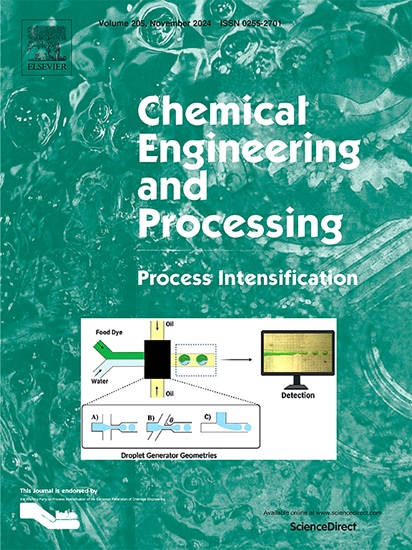Immobilization of hazardous components in zinc leaching residue by autothermal roasting with pyrite
IF 3.9
3区 工程技术
Q3 ENERGY & FUELS
Chemical Engineering and Processing - Process Intensification
Pub Date : 2025-06-04
DOI:10.1016/j.cep.2025.110391
引用次数: 0
Abstract
In this paper, pyrite is innovatively used as sulfur source, and its combustion heat is used to achieve effective detoxification of zinc leaching residue. Realize the treatment of waste with waste. The effects of several factors on the immobilization of hazardous components like Zn, Pb, As, and Cd were systematically investigated. The results show that under the condition of a roasting temperature of 975 °C, roasting time of 2.5 h, sulfur content of 20 %, and air flow of 0.8 m3·h-1, the leaching concentrations of Zn, Pb, As, and Cd in the roasted residue were 15.9 mg·L-1, 0.1 mg·L-1, 1.72 mg·L-1, and 0.84 mg·L-1, respectively, all of which are below the limits of hazardous waste identification standard. Thermodynamic analysis of the pyrite roasting process revealed that the heat generated by its combustion facilitates the roasting process of zinc leaching residue. The combustion product SO2 can transform PbCO3 in the leaching residue into PbSO4, and Fe2O3 can convert ZnO, ZnS and ZnSO4 into ZnFe2O4. PbFe6(SO4)4(OH)12 transforms to PbSO4, Fe2O3 and SO3. CdO generates CdFe8O16Zn3 after roasting. As is immobilizated in the roasted residue in the form of FeAsO4. Magnetic separation was performed on the roasted residue to recover Fe, and the obtained concentrate had an Fe content of 54.20 %. The residue mass decreased by 25.73 % post-roasting, realizing “waste-treats-waste” through sulfur self-consumption and SO2 fixation.

黄铁矿自热焙烧固定化锌浸渣中有害成分的研究
本文创新性地利用黄铁矿作为硫源,利用其燃烧热对浸锌渣进行有效解毒。实现以废治废。系统研究了几种因素对锌、铅、砷、镉等有害成分固定化的影响。结果表明:在焙烧温度为975℃、焙烧时间为2.5 h、硫含量为20%、空气流量为0.8 m3·h-1的条件下,焙烧渣中Zn、Pb、As和Cd的浸出浓度分别为15.9 mg·L-1、0.1 mg·L-1、1.72 mg·L-1和0.84 mg·L-1,均低于危险废物鉴定标准限值。对黄铁矿焙烧过程的热力学分析表明,黄铁矿燃烧产生的热量有利于浸锌渣的焙烧过程。燃烧产物SO2可将浸出渣中的PbCO3转化为PbSO4, Fe2O3可将ZnO、ZnS和ZnSO4转化为ZnFe2O4。PbFe6(SO4)4(OH)12转化为PbSO4、Fe2O3和SO3。CdO焙烧后生成CdFe8O16Zn3。As以feo4的形式固定在焙烧残渣中。对焙烧渣进行磁选回收,所得精矿铁含量为54.20%。焙烧后残渣质量降低25.73%,通过硫的自耗和SO2的固定实现了“废-处理-废”。
本文章由计算机程序翻译,如有差异,请以英文原文为准。
求助全文
约1分钟内获得全文
求助全文
来源期刊
CiteScore
7.80
自引率
9.30%
发文量
408
审稿时长
49 days
期刊介绍:
Chemical Engineering and Processing: Process Intensification is intended for practicing researchers in industry and academia, working in the field of Process Engineering and related to the subject of Process Intensification.Articles published in the Journal demonstrate how novel discoveries, developments and theories in the field of Process Engineering and in particular Process Intensification may be used for analysis and design of innovative equipment and processing methods with substantially improved sustainability, efficiency and environmental performance.

 求助内容:
求助内容: 应助结果提醒方式:
应助结果提醒方式:


